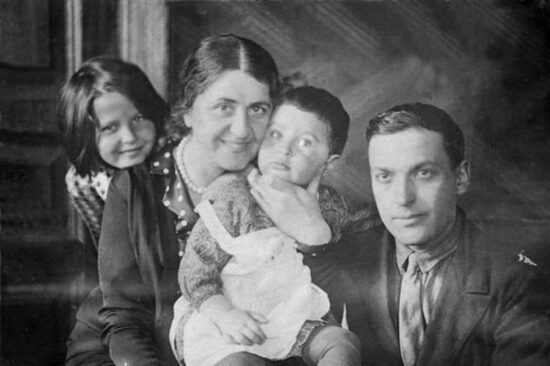Lev Vygotsky’s zone of proximal development, or ZPD for short, describes a way to maximize a child’s learning. The zone of proximal development is about assessing a child’s academic achievements and spotting the natural forward thrust of a child’s learning direction: where that child could be in his learning with a bit of guidance. It’s about learning potential and about getting a child from point A to point B.
Vygotsky’s term: “zone of proximal development” is marvelously descriptive. The idea is that wherever a child is in his or her learning, there is a range of learning that is within reach, but not yet attained. This is where the child can get to with a nudge from a teacher that sees the child as he or she really is at a given moment in time, rather than where he or she is supposed to be according to external guidelines set by say, the Board of Education.
In the following clip, we see a demonstration of how the zone of proximal development works. The boy has memorized the names of the numbers. He doesn’t yet understand what those names signify. By pointing at blocks, one for each number name, he comes to understand that the names signify specific numbers. He has moved from rote memorization of number names to actual counting.
Vygotsky Theory of ZPD
The boy moves to the next level through the guidance of the teacher who shows him what to do with his finger, the blocks, and the sound names of the numbers he has already learned. Here, the zone of proximal development is clear: move from knowing the names of the numbers to the act of counting through a demonstration of what counting is in practice. Vygotsky saw a child’s knowledge as being in a constant state of maturation.
“The zone of proximal development defines functions that have not matured yet, but are in a process of maturing, that will mature tomorrow, that are currently in an embryonic state; these functions could be called the buds of development, the flowers of development, rather than the fruits of development, that is, what is only just maturing.” [1]
Perhaps the saddest part of Vygotsky’s theory is that it remained in its own embryonic stage of development, due to the fact of his untimely death at age 37 of tuberculosis, just two years after he developed his theory of the zone of proximal development. Other education theorists have jumped into the fray to build on Vygotsky’s theory, for instance, through the concept of “scaffolding,” a term never used by Lev Vygotsky. Scaffolding derives from the idea of supports that are gradually removed as a building is constructed. In an educational sense, scaffolding offers guidance through focused questions and is tapered off as a student becomes competent in a specific academic discipline.
Viygotsky Died Young, Accomplished Much
While Vygotsky’s time on this earth was short (November 17, 1894-June 11, 1934), his effect on the field of education is immeasurable. The son of a Jewish banker, Vygotsky only obtained an academic degree at Moscow State University as a result of winning a place in the Jewish Lottery. The lottery determined which Jews out of a pool of many applicants could be admitted to a given school. The quota for Jewish students meant that only 3% of the total student body could be of Jewish blood.
Though Vygotsky gained fame for his work in the field of developmental psychology, child development, and education, the Belarusian researcher’s original degree was in the field of law and his hobby by choice, the arts. Only later did he find his way to research. Today, no student of psychology, child development, or education will leave the hallowed halls of academia without some understanding of Vygotsky’s theories, and in particular, his theory of the zone of proximal development.
Perhaps the main lesson to be learned from Vygotsky’s work is to see the now in order to see the future. By seeing a child’s current state of learning in its raw, naked state, we gain access to an internal crystal ball which tells us where that child could be with the right questions asked and just a bit of external support. We learn through Vygotsky’s zone of proximal development to always see a child as something that is never static, as someone that can always learn and grow and move forward.
Applying Lev Vygotsky’s Zone of Proximal Development
To Vygotsky, the learning process was never over. Vygotsky’s intention was to apply the zone of proximal development to every area and not just to child education. This is Lev Vygotsky’s legacy to all of us: the idea that life is all about growth, refinement, and forward movement. As long as we live, as parents, teachers, and as individuals, the process never ends.
________________________________________________________________
[1] Vygotskii [Vygotsky], L.S. 1935. “Dinamika umstvennogo razvitiia shkol’nika v sviazi s obucheniem.” In Umstvennoe razvitie detei v protsesse obucheniia, pp. 33–52. Moscow-Leningrad: Gosuchpedgiz.
